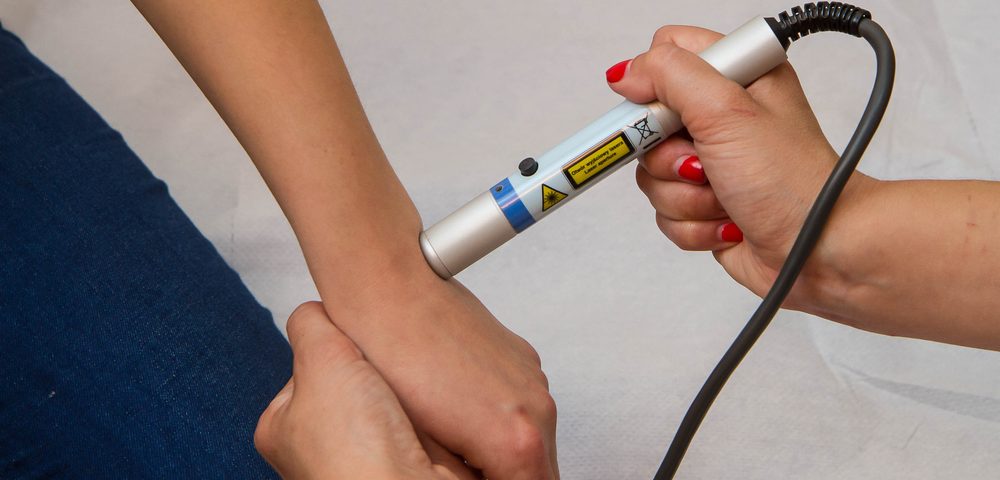High-intensity laser therapy reduced pain and improved outcomes in a woman who has had fibromyalgia for a long time, a case study showed.
The study, “Treatment of drug-resistant fibromyalgia symptoms using high-intensity laser therapy: a case-based review,” was published in the journal Rheumatology International.
Clinical trials have suggested that low-level laser therapy, either alone or combined with fibromyalgia medication, can ease the disease’s muscle pain and stiffness. Doctors often use the therapy, also known as LLLT, to help heal wounds as well as alleviate chronic pain.
Studies that followed up the trial findings failed to show that LLLT can ease muscle pain, however.
Newer studies have indicated that high-intensity laser therapy, or HILT, may do a better job than LLLT of alleviating the pain in muscle diseases such as fibromyalgia.
These results prompted researchers to see whether three levels of HILT could help an older woman with fibromyalgia. The levels were low, intermediate and high watt intensities.
The 67-year-old woman had had fibromyalgia for seven years. She had failed to improve after other forms of therapy — medication, diet supplements, and an interdisciplinary pain management program.
The pain management program included physical therapy, behavioral therapy, meditation with Cymbalta and Tylenol, and even a limited series of laser treatments at 25 watts’ intensity.
Researchers tried a low-intensity level of 1 watt with the patient, an intermediate level of 42 watts and a high-intensity level of 75 watts.
They delivered the laser beams to her spinal column and 10 tender points between her hips and shoulders.
The one-watt therapy failed to help her. But “both the 42 and the 75 W [watt] treatments produced a dramatic reduction in her overall pain, improved her quality of sleep, and increased her level of physical activity for 4–10 days after these treatment sessions,” the researchers wrote.
In addition, after the 42- and 75-watt treatments, the patient no longer needed opioid-based medication.
Overall, the study illustrated “the potential beneficial effects of using higher power levels of HILT for patients with fibromyalgia syndrome who have failed to respond to conventional inter-disciplinary treatment regimens,” the team wrote.
They also said that they believe the treatment could reduce the risk of opioid dependence among fibromyalgia patients.
To further evaluate the use of laser therapy, the team started a clinical trial (NCT02948634) at the UT Southwestern Medical Center in Dallas. It will look at 42-watt laser beams’ ability to help patients whose fibromyalgia has failed to respond to other treatments.
Researchers are recruiting participants for the trial. More information can be found at this link.

